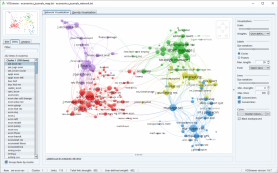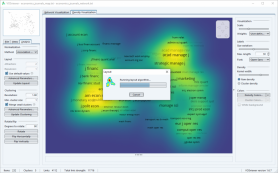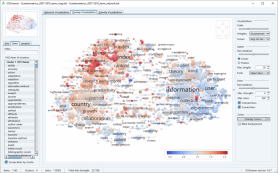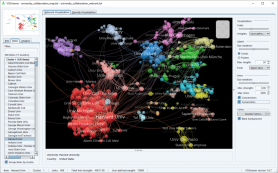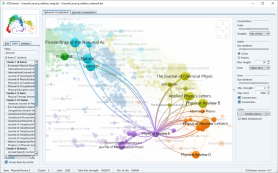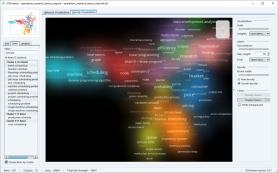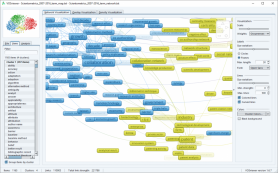Welcome to VOSviewer
VOSviewer is a software tool for constructing and visualizing bibliometric networks. These networks may for instance include journals, researchers, or individual publications, and they can be constructed based on citation, bibliographic coupling, co-citation, or co-authorship relations. VOSviewer also offers text mining functionality that can be used to construct and visualize co-occurrence networks of important terms extracted from a body of scientific literature.
VOSviewer version 1.6.20
VOSviewer version 1.6.20 was released on October 31, 2023. This version offers improved features for creating maps based on data downloaded through APIs. It also supports creating maps based on data exported from Scopus in the new Scopus file format.
VOSviewer version 1.6.19
VOSviewer version 1.6.19 was released on January 23, 2023. This version offers a number of improvements in VOSviewer's support for creating maps based on OpenAlex data. It also fixes some problems in creating maps based on Web of Science data.
VOSviewer version 1.6.18
VOSviewer version 1.6.18 was released on January 24, 2022. The following features have been added:
- Creating maps based on OpenAlex data. OpenAlex is a new open data source released recently by OurResearch.
- Querying Europe PMC using full-text search and creating citation-based maps based on Europe PMC data.
- Creating co-authorship and citation-based maps of organizations based on Semantic Scholar data.
- Querying Crossref using ROR (Research Organization Registry) IDs.
Microsoft Academic has been discontinued and is therefore no longer supported by VOSviewer.
VOSviewer version 1.6.17
VOSviewer version 1.6.17 was released on July 22, 2021. The following features have been added:
- Support has been added for sharing maps online. Maps will be visualized using the VOSviewer Online tool released last week.
- Support has been added for creating maps based on files exported from the Lens.
- Support has been added for VOSviewer JSON files, a new file type that provides an alternative for VOSviewer map and network files.
More information can be found in this blog post.
VOSviewer version 1.6.16
VOSviewer version 1.6.16 was released on November 25, 2020. This version fixes some problems in VOSviewer's functionality for working with data from Dimensions and Semantic Scholar. It also offers new functionality for querying the Microsoft Academic API using author, affiliation, and journal IDs and for creating term co-occurrence maps based on Semantic Scholar data.
VOSviewer version 1.6.15
VOSviewer version 1.6.15 was released on April 1, 2020. This version fixes some problems in VOSviewer's functionality for querying the API of Microsoft Academic. It also offers a few new options for querying the Microsoft Academic API, including options for searching in abstracts and for filtering out duplicate documents and non-scientific content.
Next edition of CWTS VOSviewer course takes place in March 2025
On March 18-21, 2025, CWTS organizes the next edition of its VOSviewer course. The course takes place online. Participants will learn about all ins and outs of VOSviewer. The course is taught by the VOSviewer developers and includes a lot of hands-on practice with the software.
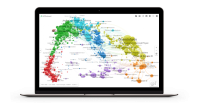
VOSviewer Online
VOSviewer Online is a web-based version of VOSviewer. It runs in a web browser and can be used to share interactive visualizations and to embed these visualizations in online platforms. More information can be found in this blog post.
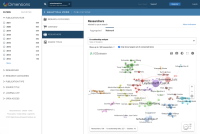
VOSviewer Online in Dimensions
VOSviewer Online has been integrated in Digital Science’s Dimensions platform, making it very easy for Dimensions users to create VOSviewer visualizations of co-authorship networks and citation networks. More information is available in this blog post.
You may also be interested in our CitNetExplorer tool
CitNetExplorer is a software tool for visualizing and analyzing citation networks of scientific publications. Citation networks can be explored interactively, for instance by drilling down into a network and by identifying clusters of closely related publications.







